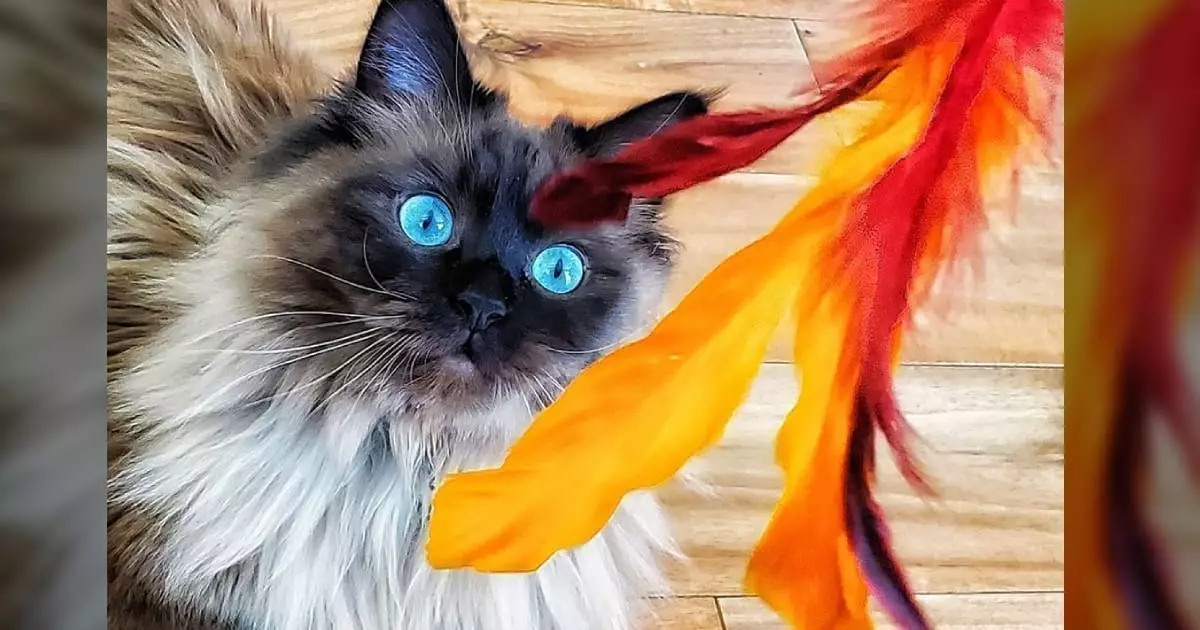Hello, wonderful human caretakers of our furry companions! It’s your friendly neighborhood feline here, prepared to share some pearls of cat wisdom that may help you deepen the bond with your beloved pet. As I settle into my favorite sun-kissed chair on the porch, prepare for yet another delightful catnap, I can’t help but ponder a crucial aspect of a cat’s enrichment: playtime, specifically, the tantalizing world of wand toys. Despite their simple structure—just a stick and a toy on a string—some might argue every wand tells an intricate tale that only a discerning feline can understand.
The Importance of Play: It’s Not Just Fun!
Play is a fundamental part of a cat’s daily life, serving not only as entertainment but also as a means for physical and mental stimulation. Engaging in play mimics hunting behaviors, thus satisfying a cat’s instinctual drives. Contrary to the notion that all wand toys are created equal, I argue that each one possesses unique qualities that appeal distinctly to a cat’s hunting preferences. This is a crucial consideration when selecting the right wand for your feline friend.
It’s vital to understand that a cat’s interest stems from personal “prey preference.” This means that while one cat may go wild for feathers reminiscent of birds, another could be entranced by a squeaky mouse. Since our furry companions each have their own distinct hunting styles, the ideal wand toy may vary widely within a single household. Therefore, adopting a one-size-fits-all approach to cat toys could lead to feline disappointment and boredom.
Experimentation is Key
If you have ever watched your cat during a play session, you may have noticed a pattern: the thrill of the chase is not always instantaneous. Cats often take a moment to assess their surroundings, carefully studying a potential “prey” before making a move. This preview phase should not be ignored, especially when introducing new wand toys. Let your furry friend take the lead; patience is essential when exploring new forms of play.
To elevate the excitement, consider rotating toys frequently. A variety of wand toys can keep your cat’s interest alive and allow you to see which types of movement and materials strike a chord with them. For instance, while some cats might be drawn to the tactile satisfaction of felt ropes, others may prefer shiny ribbons or crinkly elements that entice their playful spirits. Wand toys that embody various textures can provide the sensory stimulation your cat craves.
Understanding Prey Dynamics
Cats are instinctual hunters. Therefore, the way small animals move can provide great insight into determining how to manipulate a wand for optimal feline engagement. Watch how a mouse darts across the ground, often stopping in quick bursts to sniff out potential danger. Replicating this scurrying and sudden pause can translate into a more fulfilling play session for your cat. As our companions grow older, they may start to appreciate these subtleties rather than rapid jerks and swoops.
Birds, those airy temptresses of the skies, offer a unique challenge for cats as well. Their erratic movements on the ground often mimic the flitting and fluttering motions that cats adore. It’s crucial as caretakers to deliver an experience that evokes their innate hunting instincts, enticing them to leap and pounce, striving for that elusive catch—real or imagined.
Tailoring Play to Age and Mood
Not all cats are created equal, and just like us humans, their age and physical condition greatly influence their play styles. While younger and more energetic kittens may thrive on high-energy shenanigans, older cats often prefer steadier, more deliberate movements that reflect their seasoned prowess. So, engage in a little detective work to customize playtime around your kitty’s preferences and developmental stage.
Older felines may stretch their limbs with slow-motion pounces and quiet stares, but don’t forget: they still hunger for interaction! Just because they may not leap as high doesn’t mean they don’t enjoy the dance; it simply means the dance may be more graceful, with a touch of elegance.
The Final Step: A Rewarding Treat
Finally, after an engaging and stimulating play session, it’s only fitting to reward your feline friend—don’t forget the snacks! Cats thrive on positive reinforcement, and treats can help reinforce play behavior, making it a win-win for both us and our furry companions. After all, a well-played game is always worth a delicious reward!
So, next time you whip out that wand toy, remember—you’re not just facilitating play; you’re deepening your bond, honing your cat’s natural instincts, and fostering a happier, healthier life for your cherished companion. Happy playing!

